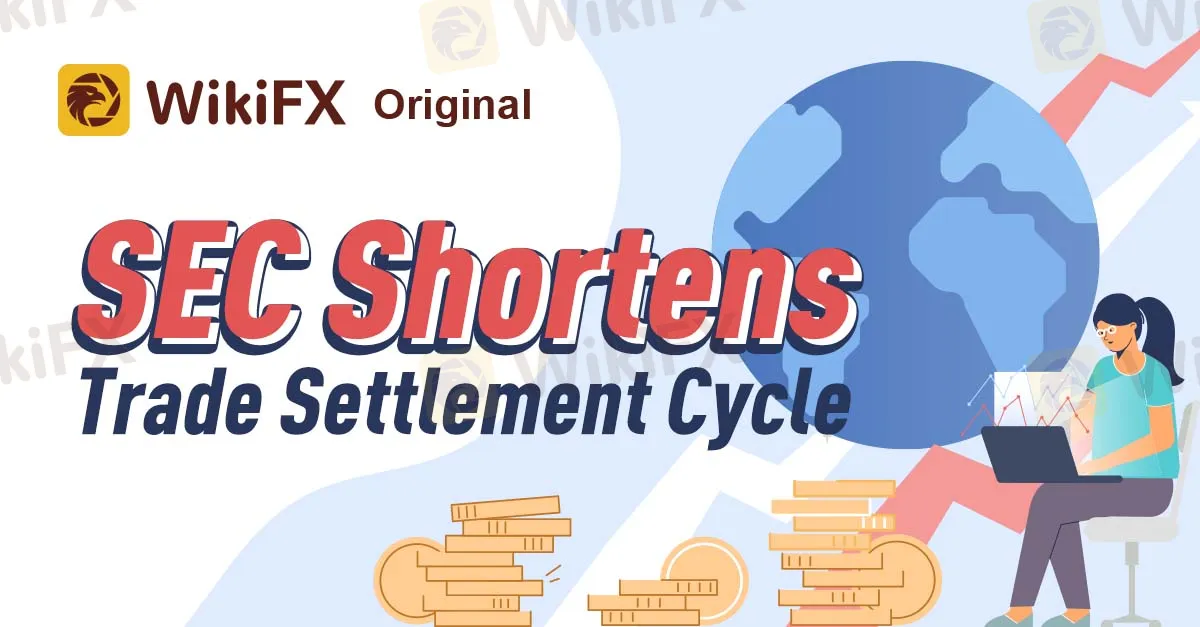简体中文
繁體中文
English
Pусский
日本語
ภาษาไทย
Tiếng Việt
Bahasa Indonesia
Español
हिन्दी
Filippiiniläinen
Français
Deutsch
Português
Türkçe
한국어
العربية
SEC Shortens Trade Settlement Cycle
Abstract:The usual settlement cycle for the majority of broker-dealer transactions in securities has been shortened by the SEC from two business days to one.

The United States Securities and Exchange Commission (SEC) has officially announced a new change to its broker-dealer securities transactions. Securities transactions ought to be settled within one business day (T+1) after a trade is made instead of two.
The securities regulator announced on Wednesday (15th January 2023) that this new switch will become effective 60 days after the finalised adjustments are made in the US Federal Register. It is reported that 28th May 2024 will be the deadline for the final rules.
The modification in regulations is aimed at assisting investors while decreasing the credit, market, and liquidity risks in securities transactions encountered by market participants.
The SEC acknowledged that bouts of higher market volatility experienced in 2020 and 2021 were a factor in the revisions when it published a thorough report on the situation. The regulator stated in the study that these incidents showcase the possible vulnerabilities that were not previously addressed in the US securities industry.
Furthermore, the SEC added a new requirement in relation to straight-through processing (STP) that applies to specific categories of clearing agencies that offer central matching services.
These final regulations will mandate registered investment advisers make and keep detailed records of allocations, confirmations and affirmations for certain securities transactions.
In accordance with the final rules, central matching service providers must establish, implement, uphold, and enforce new policies and practices that are logically curated to facilitate straight-through processing. Additionally, they must submit an annual report to the Commission outlining and quantifying their progress in this area.
“I support this rulemaking because it will reduce latency, lower risk, and promote efficiency and greater liquidity in the markets,” SEC Chair Gary Gensler said.
In 1993, the SEC made its first attempt towards standardising the securities settlement cycle when it established a policy requiring broker-dealers to settle securities transactions within three business days (T+3) whilst securities transactions had to be settled within five business days (T+5). In 2017, the regulator began enforcing the current T+2 practice from the standard T+3.
Alongside the shortening of settlement cycle, the SEC also proposed rule changes to strengthen protections of customer assets managed by registered investment advisers as well as a provision that is designated to revise the Privacy Act Rule in the federal government.

Disclaimer:
The views in this article only represent the author's personal views, and do not constitute investment advice on this platform. This platform does not guarantee the accuracy, completeness and timeliness of the information in the article, and will not be liable for any loss caused by the use of or reliance on the information in the article.
Read more

Want to Succeed in Forex? Start with the Right Trading System
If you want to trade currencies and make money in the long run, you need a good forex trading system. Many new traders enter the market without a clear plan. Some rely on luck or tips from others. But trading without a system often leads to losses.

Risk Involved with Cabana Capital – Every Trader Should Know
Cabana Capital has changed its name and logo, basically everything about its identity. This seems a bit suspicious, and it's something you should definitely be concerned about. In this article, you’ll learn about the red flags that every trader needs to watch out for.

CME International Records a Massive Jump in Forex Volumes
CME International recorded a record surge in its foreign exchange trading volumes during the second quarter. Check out its performance across products and markets.

Scam Brokers Exposed! FCA Warns Traders to Stay Safe
If you are into forex trading, you need to protect your money from investment scams. Many scam brokers are active in the market now. The FCA, a reputed financial regulator, has issued a list of unlicensed brokers you need to stay away from.
WikiFX Broker
Latest News
Manual vs. Automated Forex Trading: Which One Should You Choose?
Scammed by a Click: He Lost RM300,000 in a Month
Revealing Factors That Help Determine the Gold Price in India
Why Regulatory Compliance Is the Secret Ingredient to Trustworthy Forex Brokers
How Are Trade Policies Affecting the Aluminum Market?
US Government Interest Grows in Victory Metals’ Rare Earths Supply
RM71,000 Lost in a Share Scheme That Never Existed
Pentagon to become largest shareholder in rare earth miner MP Materials; shares surge 40%
Delta shares jump 13% after airline reinstates 2025 profit outlook as CEO says bookings stabilized
Delta shares jump 12% after airline reinstates 2025 profit outlook as CEO says bookings stabilized
Currency Calculator


